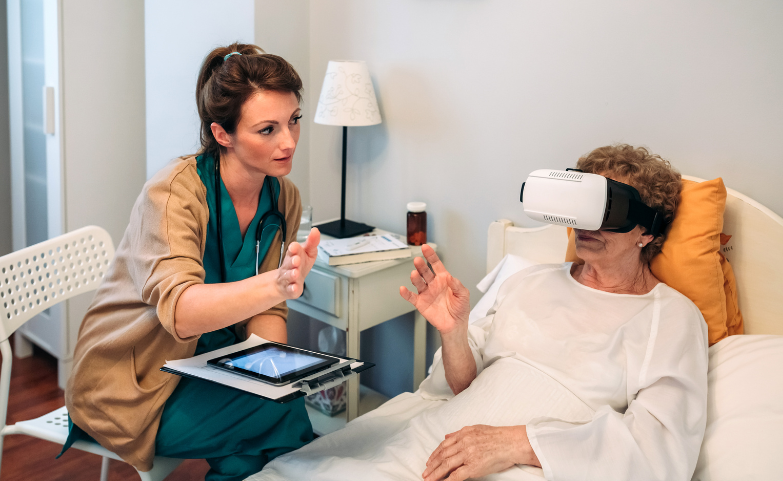
Growing Concerns Due to Social Disparities
The older population is at risk of facing adverse health effects due to discrimination often related to race and ethnicity [1]. For instance, older black patients are more likely to face increased health problems due to the discrimination they face [1]. In general, older people of color can face increased health concerns ranging from poor mental health to worsening cardiac health [1]. This often starts with them being taken less seriously during doctor visits, which can affect the treatment plan offered. Another concern is that older patients may experience discrimination based on their insurance, and even if they have difficulty receiving care in their native language [1]. Therefore, it’s no surprise that older patients in the United States are more likely to face discrimination when compared to other high-income countries [1]. Increased solutions are needed to decrease these social disparities among the older population.

Another factor that contributes to increased discrimination in the older population is gender. Almost half of older black women have reported being treated differently regarding their care when compared to both white and Latina women [1]. This is concerning because this can often lead to symptoms being left untreated in older black women populations. Furthermore, more than 25% of older patients who were discriminated against when receiving care reported that they did not feel like they got adequate care [1]. This can often be due to them being dismissed when bringing up health-related concerns, or not being taken seriously. Moreover, almost half of the older patient population that did face discrimination also reported being in either fair or poor health [1]. This is concerning and needs to be addressed by the healthcare community.
Trends in Technology Usage Amongst Older Patients
Although policy changes definitely need to decrease the gap between disparities in the healthcare system, technology can also be helpful. The idea that older patients are incapable of adjusting to the technology that comes with digital health is becoming false. For one, older populations who own a smartphone have changed from 18% in 2013 to 83% in 2021 [2]. Moreover, the percentage of older people who own a computer with internet access has increased to 90%. This is due to the increased accessibility and affordability of technology over time.

It’s also important to mention that the pandemic has assisted the growth of technology amongst older populations. The number of telehealth visits among older patients grew from 4.6% to 21.1% [2]. This is useful because older patients who live in rural areas may have difficulty receiving transportation. Even those with disabilities are able to access care virtually. Furthermore, digital health can help with social disparities by helping patients reach out to more supportive and understanding providers. Overall, providers need to actively encourage their patients to use digital health tools when it would benefit them. This can be done with increased awareness of current health IT technologies, education, and even training [2]. Furthermore, health IT companies need to ensure that technologies are developed with older populations in mind and that they are not overly complicated or solely catered to younger patients [2].
Benefits of Digital Transformation for Older Patients in Reducing Social Disparities
Digital health technology use amongst older populations can be beneficial in decreasing adverse health effects due to social disparities. For one, the use of video calls can help patients feel more connected, especially when they are in rural places [3]. Technology can also help those who face cognitive impairments or disabilities [3]. Patients can have increased access to tools that help them regain skills necessary for their care. This can increase their engagement and adherence to treatment. Furthermore, patients of color are able to be more selective since they are not limited by providers in their area. This can allow them to pick providers more willing to listen to their concerns. Therefore, technology increases the sense of community among older patients and provides them with the care they need.

HITS
HITS provides management services and collaborates with clinicians in the development of health informatics. We provide tools that promote safe, timely, patient-centered, and equitable care. Our agency culture and mission facilitate customer and human-centered design. Additionally, we tailor software and project management support products to meet our customer’s needs. HITS also focuses on transforming health care by analyzing integrated medical solutions and evaluating information systems. Our goal is to enhance individual and population health outcomes, improve patient care, and strengthen the clinician-patient relationship. Finally, HITS expands the ability for individuals to safely and securely contribute relevant and usable electronic health information and define preferences and values to their clinicians.
References
- https://www.commonwealthfund.org/publications/issue-briefs/2022/apr/how-discrimination-in-health-care-affects-older-americans
- https://www.ncbi.nlm.nih.gov/pmc/articles/PMC9494377/
- https://www.frontiersin.org/articles/10.3389/fpubh.2023.1139266/full